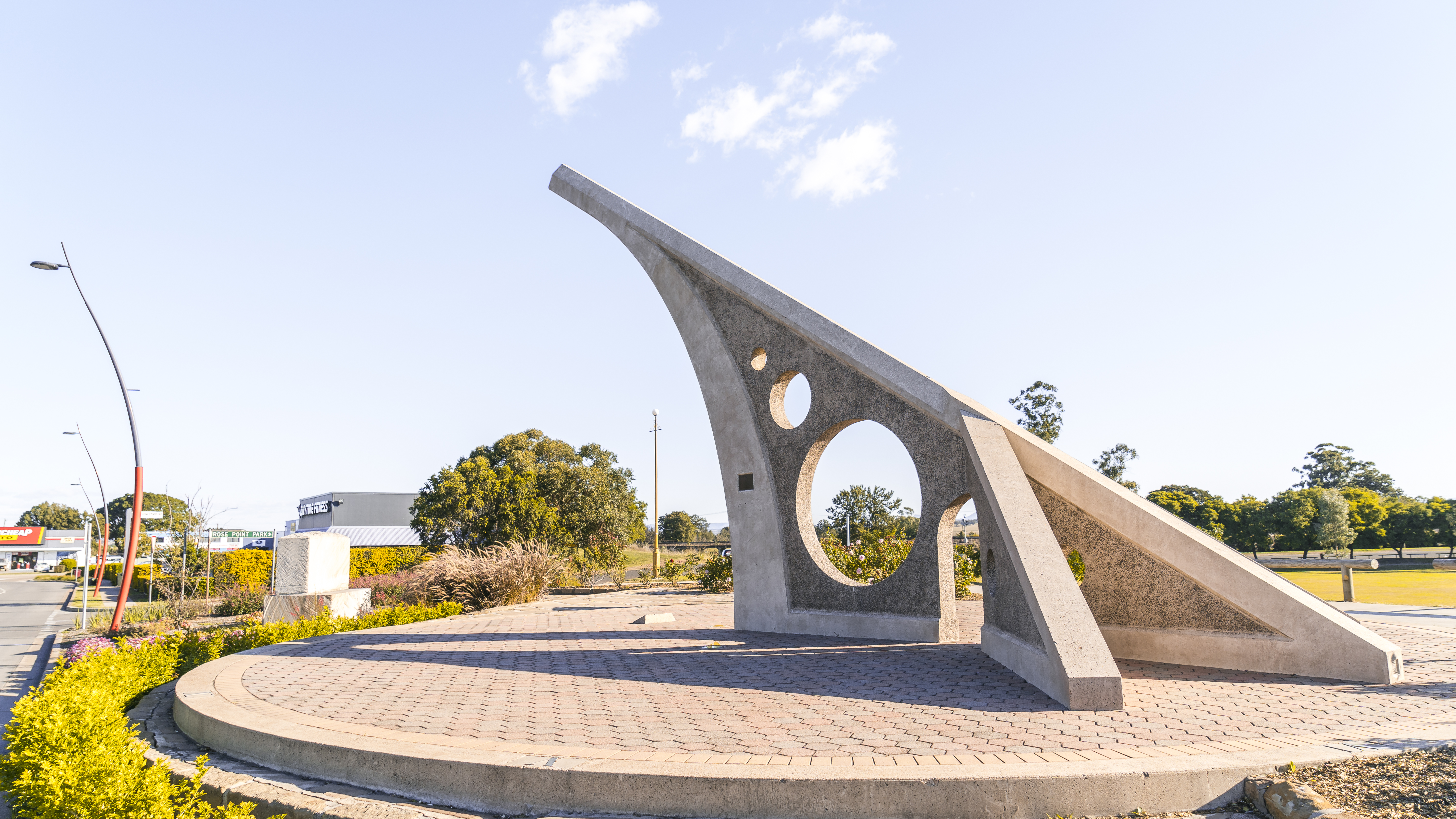Singleton Sundial

The Singleton Sundial is an enduring landmark commemorating the bicentennial of Australia, and is the major feature of the 1988 Bicentennial Riverside Park Project.
The sundial forms a gateway to the Hunter River, picnic areas, recreational and sporting facilities of Rose Point Park, also developed in the bicentennial project.
Construction of the sundial was financed by Lemington Coal Mine, a NSW Bicentennial Grant and generous contributions from mining, industry and community groups of Singleton. The sundial stands as a visible link between the old and the new – an ancient method of time telling set in the centre of the new development in Singleton.
The idea of the Sundial was first projected in 1982 by the Singleton Greening Australia Committee as an entrance way to the town’s proposed 1988 Australian bicentennial project. In 1983, the Hunter River Development Group submitted the plans for improvements and landscaping along the Hunter River from Rose Point Park to the Civic Centre which included the Sundial. In 1985, the Chief Design Draftsmen from Singleton Council began to research the idea. Work began in July 1986, with site levelling and the establishment of true north geodetic survey. In 1987, construction of the sundial began. With such an intricate structure, the exceptional quantity and detail of the steelwork took four tradesmen, 12 working days to place and erect the sundial. Friday 20 March 1987 saw the completion and official handing over of the sundial to the people of Singleton.
The Singleton Sundial is still considered the largest sundial in the southern hemisphere.
For more information, including how to read the sundial, download the Singleton Sundial brochure.